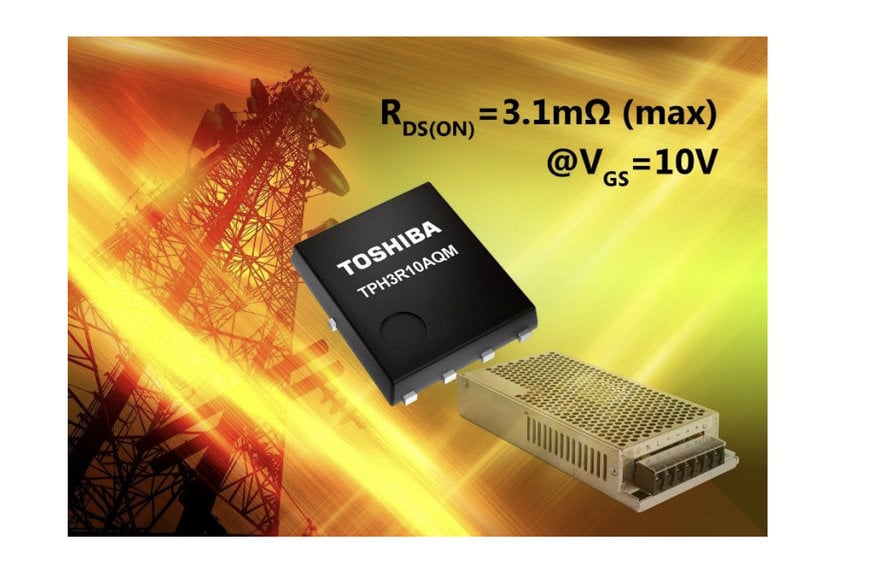electronics-journal.com
01
'23
Written on Modified on
Toshiba announces new 100V N-Channel MOSFET to support miniaturization within power supply applications
Based upon the U-MOS-X process, device offers improved On-resistance and safe operating area.

Toshiba Electronics Europe GmbH (“Toshiba”) has launched a new 100V N-channel power MOSFET based upon Toshiba’s latest generation U-MOSX-H process. The new device is ideally suited to challenging applications such as switching power supplies for data centers and communication base stations as well as industrial uses.
Designed for efficient operation, the new TPH3R10AQM achieves a value of just 3.1mΩ (max.) for the all-important drain-source On-resistance (RDS(ON)). This represents a significant 16% improvement over Toshiba’s current 100V product (TPH3R70APL) that uses the established generation process.
The highly capable device offers a drain-source voltage (VDSS) of 100V and a drain current (ID) capability of up to 120A. The low gate switch charge (QSW) enhances efficiency in high frequency applications while the elevated maximum channel temperature (Tch) of 175°C reduces the need for thermal management, thereby reducing the size and cost of end equipment.
The new MOSFET has expanded it’s safe operating area (SOA) by 76% when compared with the earlier generation which makes it suitable for linear mode operation. This enhancement significantly improves suitability for, and performance in, hot swap circuitry. Furthermore, as the gate threshold voltage range is 2.5V to 3.5V, the device is less susceptible to spurious triggering.
The product uses the highly footprint compatible SOP Advance(N) package which gives the TPH3R10AQM a PCB footprint of just 4.9mm x 6.1mm. Shipments of the new TPH3R10AQM MOSFET start immediately. Toshiba will continue to expand their lineup of robust power MOSFETs that can increase power supply efficiency by reducing loss, contributing to reduced power consumption within equipment.
www.toshiba.semicon-storage.com

